From The Pismo To The iPad -- A Decade Of Apple Products

From January 2000, when Steve Jobs (again) became CEO of Apple, until today, Apple has seen incredible growth, not only in profits, but in innovative products.
Had you bet on Apple stock in late September 2000, when a share would have cost you roughly $25, you'd be a happy iPad user today, when that same share would cost about $237.
Here's a look at the past decade of Apple products.
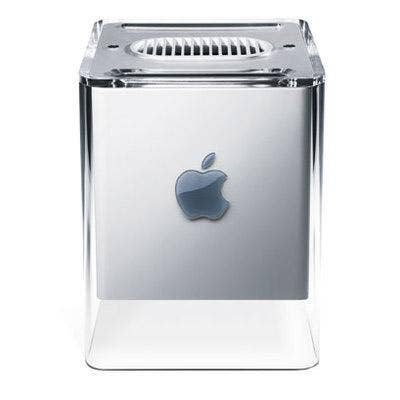
2000
Apple introduces the PowerBook G3/500 (Pismo) portable computer. With a 500-MHz G3 processor, 128 MB RAM, ATI Rage Mobility 128 graphics controller, 6-GB hard drive and a DVD-ROM drive, it is priced at $3,499. The similarly priced Macintosh G4/500 computer is also introduced. The company has roughly 4.5 percent of the computer market. In the summer, the PowerMac G4 Cube (pictured) debuts, and Circuit City announces it will, after a three-year hiatus, once again carry the Macintosh line of computers. Apple Computer begins shipping the first personal computers with standard dual processors, the Power Mac G4 with dual 450- or 500-MHz processors.
Despite the myriad product introductions -- including an updated, $799 iMac -- the company says it will not meet revenue forecasts and the company stock plummets by half to $25 a share in early Fall.
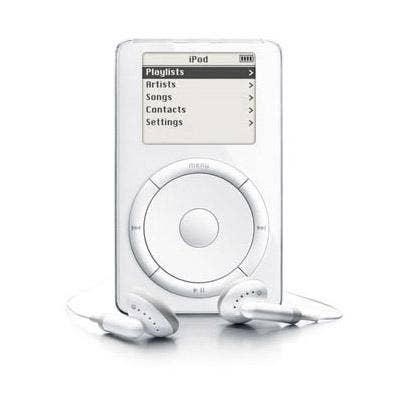
2001
Jobs introduces Mac OS X at Macworld in January. In March, the company begins selling it for $129, and a firmware update lets many Macs run the new OS.
The Titanium PowerBook G4 notebook debuts. Its small footprint and light weight (5.3 lbs.) made the computer attractive to mobile workers; however, its price tag was considerably hefty at between $2,599 and $3499.
In October, the iPod (pictured) launches. The MP3 player stored up to 1,000 CD-quality songs on its 5-GB hard drive. Its built-in FireWire port let users download an entire CD into iPod in less than 10 seconds and 1,000 songs in less than 10 minutes, a feat Apple claimed was 30 times faster than USB-based players.
Apple made a net profit of $66 million in Q4 2001, down from $170 million in the year-ago quarter. Revenue was down 22 percent from the year-ago quarter also.
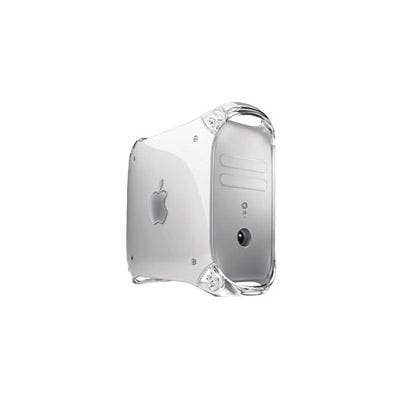
2002
iPhoto debuts at Macworld in January. The software, which organizes and edits digital photos, is called the "missing link" in digital photography by the company. By early March, 1 million copies had been downloaded.
The new Power Mac G4 had dual 1-GHz PowerPC G4 processors, the industry's first NVIDIA GeForce4 graphics card and a DVD/CD burning SuperDrive with a price tag of $2,999. According to the company, the computer ran applications such as Adobe Photoshop up to 72 percent faster and encoded DVD Video more than 300 percent faster than a 2-GHz Pentium 4-based PC.
Apple rounded out its iBook line with a high-end, 14-inch model for $1,799 and a 12-inch starter model at $1,199.
Apple sold only 2.3 percent of computers worldwide. Earnings reports were not bright either; in Q4, the company posted a net loss of $45 million, compare with a net profit of $66 million, in the year-ago quarter. At $1.44 billion, revenue for the quarter was flat compared with Q4 2001.
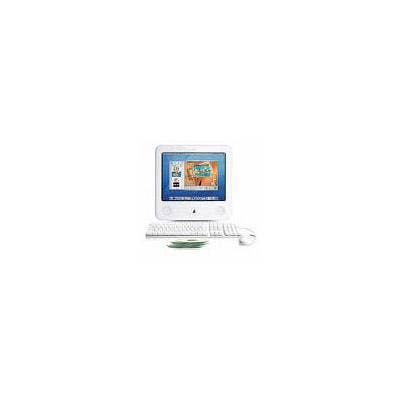
2003
iTunes debuts, offering a fast, easy way for iPod users with a Mac to download music for 99 cents per song. The iTunes Music Store featured more than 200,000 songs and 20 artists. A Windows version was made available later that year. By mid-December, more than 25 million songs were downloaded.
The new eMac line featured up to a 1-GHz PowerPC G4 processor, a faster 4x SuperDrive, high-performance ATI Radeon 7500 graphics, up to an 80-GB hard drive, a 17-inch flat CRT and internal support for AirPort Extreme wireless networking. The system started at $799. In the fall, new G4 iBooks came out, with the 12-inch display model starting at $1,099 and the 14-inch display model starting at $1,299. Apple Computer releases Mac OS X 10.3 operating system, the OS formerly known as Panther.
Financial stats were looking up: Apple posted a net profit of $44 million in Q4, compared with a net loss of $45 million in the year-ago quarter. Revenue for the quarter was $1.715 billion, up 19 percent from the year-ago quarter. Portable market share for the quarter was 5.09 percent .

2004
More than 2 million iPods were sold by January 2004. The company introduced the iPod Mini that month.
The company begins shipping its Xserve G5 (pictured), delivering more than 30 gigaflops of processing power per system -- some 60 percent more than the PowerPC G4-based Xserve -- in a 1U rack-mount enclosure. On the other end of the spectrum, the entry-level, 1.8-GHz single-processor Power Mac G5 desktop debuted, priced at $1,499.
On iTunes' first birthday, Apple says more than 70 million songs have been downloaded.
For the fourth quarter of 2004, Apple's market share was down from the year earlier period, to 4.99 percent. However, financials were very good as consumer products like the iPod and the success of the iTunes store became increasingly apparent: Apple posted a net profit of $106 million, compared to a net profit of $44 million, in the year-ago quarter. Revenue for the quarter was $2.35 billion, up 37 percent from the year-ago quarter.

2005
In September, the iPod nano (left) is released, a device thinner than a standard pencil. The device holds 1,000 songs or 25,000 photos, visible on a color screen. The 4-GB model costs $249; the 2-GB model $199.
The next month, the new iPod bows, featuring a 2.5-inch color screen, which can play music videos, video Podcasts, home movies and television shows. This iPod holds up to 15,000 songs, 25,000 photos or more than 150 hours of video; the 30-GB model is tagged at $299 and the 60-GB model at $399. Later in the fall, Apple says iTunes sold 1 million videos in less than 20 days.
This quarter, Apple reported the highest revenue and earnings in its history. Fourth-quarter revenue was $3.68 billion, a 56.6 percent increase from year-ago figures, and the net quarterly profit hit $430 million. That profit number is nearly 10 times Apple's profit in 2003.
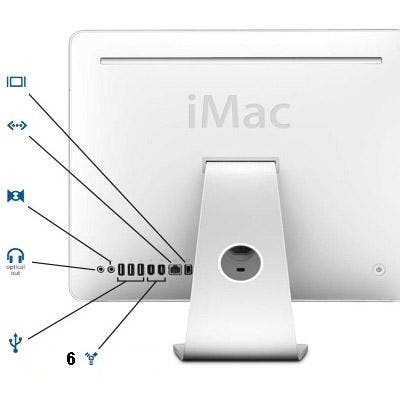
2006
The first iMac computer with an Intel processor is released. Priced at $1,699, it has a 2.0-GHz Intel Core Duo T2500 processor, 1 GB RAM, 250-GB hard drive, 128-MB ATI Radeon X1600 graphics card, dual-layer DVD+/-RW drive, Mac OS X 10.4.4, 20-inch wide-screen LCD, AirPort Extreme, Bluetooth 2, iSight camera, USB, FireWire, audio and Ethernet. Jobs says the new product is up to twice as fast as its predecessor. Also, the $149 1-GB iPod Nano debuts, as well as the U2 iPod and the wireless Mighty mouse.
Boot Camp, public beta software that enables Intel-based Macs to run Windows XP, hits the ground running.
Eric Schmidt joins the board of directors.

2007
Apple introduces iPhone, a combination mobile phone, wide-screen iPod and Internet communications device with desktop-class e-mail, Web browsing, searching and maps. AT&T is the exclusive carrier for the product. The iPod touch debuts in the fall. In addition, Apple debuts Mac OS X Leopard later in the year and sells 2 million copies in the first weekend.
The company reports 4Q revenue of $6.22 billion and net quarterly profit of $904 million. That compares with revenue of $4.84 billion and net quarterly profit of $542 million, in the year-ago quarter.

2008
Apple ships the MacBook Air, dubbed the world's thinnest notebook, measuring 0.16 inch at its thinnest point. Its maximum height of 0.76 inch is less than the thinnest point on competing notebooks. It features a 13.3-inch LED display and is powered by a 1.6-GHz or 1.8-GHz Intel Core 2 Duo processor with 4-MB L2 cache. Standard equipment includes 2 GB of memory, an 80-GB 1.8-inch hard drive, 802.11n Wi-Fi technology and Bluetooth 2.1. This is the first subcompact laptop offered by Apple since the 12-inch PowerBook G4 was discontinued in 2006.
The iPod Touch and the iPhone are upgraded. Apple announces it will no longer exhibit at Macworld.
The company's Q4 revenue is up to $7.9 billion and net quarterly profit jumps to $1.14 billion.

2009
The iPhone 3GS debuts in June and within two weeks sells 1 million units. The Snow Leopard operating system ships Aug. 28. The new iPod nano features a built-in video camera and the iPod Shuffle is available starting at $59.
In November, Apple announces that more than 100,000 apps are available from the App Store.
The new iPod shuffle is nearly half the size of the previous model, and is equipped with VoiceOver, voice-recognition software. The device is smaller than a AA battery, holds up to 1,000 songs and features controls located on the earphone cord.
Revenue for Q4 hits $9.87 billion and net quarterly profit reaches $1.67 billion.

2010
On April 5, Apple says it sold more than 300,000 iPads in the U.S. as of midnight Saturday, April 3. That figure included deliveries of preordered iPads to customers, deliveries to channel partners and sales at Apple Retail Stores. According to the company, iPad users downloaded more than 1 million apps from Apple's App Store and more than 250,000 ebooks from its iBookstore during the first day.
"It feels great to have the iPad launched into the world -- it's going to be a game changer," said Jobs. "iPad users, on average, downloaded more than three apps and close to one book within hours of unpacking their new iPads."